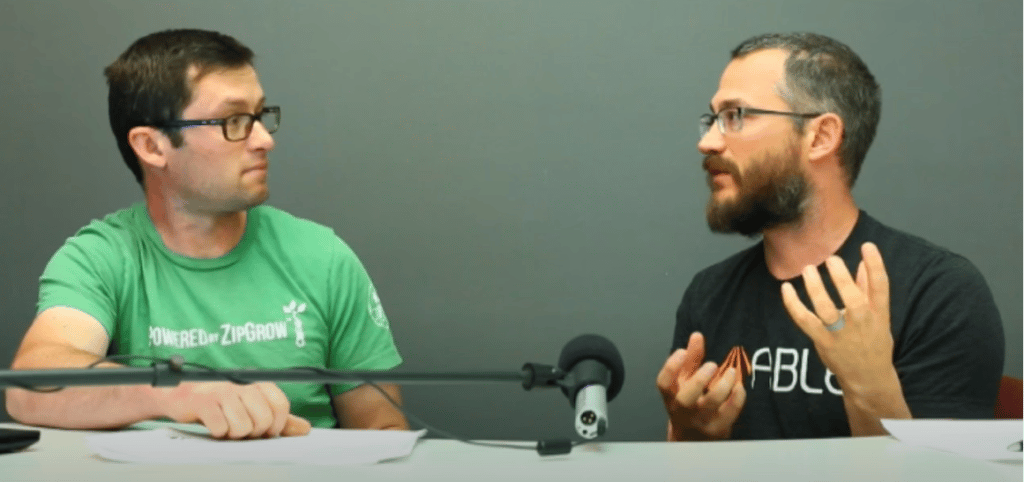Artificial lighting brings unwanted heat – what’s a grower to do?
With the falling cost of LED lighting, many growers are adding supplemental lighting to their farms.
But LED lighting can bring an often unwanted cost to the equation in the form of cooling costs.
This article will introduce the costs and benefits of an HVAC system, and includes a recorded conversation with Dr. Nate Storey as he discusses LED lighting, cooling costs and HVAC systems.
Optimal indoor production requires LED lighting
In our previous session, we discussed the capital expenses associated with an 1,800 square foot vertical indoor farm. To ensure this farm reaches optimal production levels, it must be outfitted with high quality LED lighting that delivers enough light to keep plants growing as they should.
This particular system requires over 200 LED lights and is capable of growing over 3,000 pounds of produce a month.
However, all this light comes with an unwanted byproduct: heat.
Indoor growers must beware of excess heat!
Heat, as experienced growers know, can bring a myriad of problems for controlled environment farms including pest and disease issues related to relative humidity.
That’s why it’s crucial for all growers to understand what it takes to keep a growing environment at the proper temperatures and that means managing the heat given off from artificial lighting.
Our team of engineers estimate that the system above will need 20 tons of cooling to be able to keep the facility at a healthy temperature for the crops.
But…
- What is a ton of cooling?
- And how much will this add to my capital budget?
- How much will it add to ongoing operational costs?
We sat down with Dr. Nate Storey to talk about the real costs of HVAC and environmental controls related to indoor farming.
The conversation helps growers and AgTech investors gain a better understanding of the demands that an indoor growing system places on HVAC systems, and what kind of CAPEX and OPEX costs can be expected in order to maintain optimal temperatures and humidity in the growing environment.
Timestamps
6:06 – Why should you consider HVAC?
8:27 – Benefits of good climate control
11:02 -Understanding costs of HVAC
14:36 – Balancing operational costs down the road with upfront capital expenses
15:15 – What should you think about when you are getting started with an HVAC system
20:13 – What are people paying for electric in Lubbock Texas, Vancouver Canada, Red Lodge Montana, Seattle, and Oslo (Dubai!)
22:42 – What are the questions you should be prepared to answer before speaking with an HVAC/LED lighting consultant?
25:41 – How do you get to a basic estimate for HVAC costs?
26:55 – LEDs actually do release heat. Discussion about efficiency
28:59 – Arrive at a tons-cooling need
32:38 – Do we need redundancy when we are designing our HVAC?
34:14 – Example using a 7,500 square foot growing floor
About Bright Agrotech
As a leader in vertical plane crop production, Bright Agrotech helps modern farmers and their investors understand how to create economical farms, whether indoors or in a greenhouse.
By empowering innovative farmers around the world with industry leading education and equipment, Bright Agrotech seeks to help build a new food economy based on transparency and quality.
Join us for the next event!






